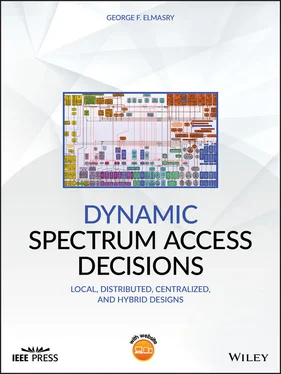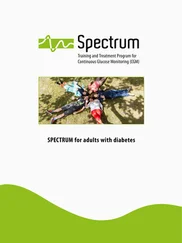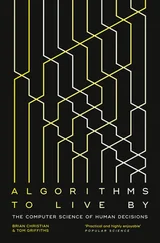1 Overview 14.2 Acronyms and Abbreviations 14.3 Definitions of Advanced Radio System Concepts 14.4 Definitions of Radio System Functional Capabilities 14.5 Definitions of Decision‐making and Control Concepts that Support Advanced Radio System Technologies 14.6 Definitions of Network Technologies that Support Advanced Radio System Technologies 14.7 Spectrum Management Definitions 14.8 Glossary of Ancillary Terminology Chapter 15: IEEE Recommended Practice for the Analysis of In‐Band and Adjacent Band Interference and Coexistence Between Radio Systems 15.1 Overview 15.2 Normative References 15.3 Definitions, Acronyms, And Abbreviations 15.4 Key Concepts 15.5 Structure of Analysis and Report 15.6 Scenario Definition 15.7 Criteria for Interference 15.8 Variables 15.9 Analysis—modeling, Simulation, Measurement, and Testing 15.10 Conclusions and Summary 16 IEEE Standard for Architectural Building Blocks Enabling Network‐Device Distributed Decision Making for Optimized Radio Resource Usage in Heterogeneous Wireless Access Networks 17 IEEE Standard for Policy Language Requirements and System Architectures for Dynamic Spectrum Access Systems 17.1 Overview 17.2 Normative References 17.3 Definitions, Acronyms, and Abbreviations 17.4 Architecture Requirements for Policy‐based Control of DSA Radio Systems 17.5 Architecture Components and Interfaces for Policy‐based Control of DSA Radio Systems 17.6 Policy Language and Reasoning Requirements Chapter 18: IEEE Standard for Spectrum Sensing Interfaces and Data Structures for Dynamic Spectrum Access and Other Advanced Radio Communication Systems Annex 19A: IEEE Standard for Radio Interface for White Space Dynamic Spectrum Access Radio Systems Supporting Fixed and Mobile Operation 19.1 Overview 19.2 Definitions, Acronyms, and Abbreviations 19.3 Reference Model 19.4 MAC Sublayer 19.5 PHY Layer
11 Index
12 End User License Agreement
1 Chapter 2 Table 2A.1 Different categories of signals
2 Chapter 3 Table 3.1 Signal presence versus hypotheses.
3 Chapter 6 Table 6.1 5G frequency bands allotted below the 6 GHz range. Table 6.2 5G cell types.
4 Chapter 8Table 8.1 Example weighted matrix as a lookup table.
5 Chapter 12Table 12.1. Agency inputs to the JFMO.Table 12.2. Products of the JFMO.Table 12.3. Agency inputs to the JSME.Table 12.4. Products of the JSME.
6 Chapter 13bTable B.1. Compatibility between SMO tools.Table B.2. SMO tool capabilities.
7 Chapter 13dTable D.1. Call signs, call words, suffix and expander.Table D.2. Data input for JSIR offline reporting.
8 Chapter 13eTable E.1. Example of world time zone conversion (standard time).Table E.2.
9 Chapter 14Table 14B.1 —Rules defining radio terminology relationships interference.Table 14B.2 —Permitted combinations of radio types.Table 14B.3 —Classification of radios according to the SDR Forum (now the Wir...Table 14B.4 —Examples of collaborative scenarios.
10 Chapter 15Table 15.1 Structure of an interference and coexistence analysis report.Table 15.2 Sample system interaction matrix.Table 15.3 Relationship between model parameters: If Model A has no harmful i...Table 15.4 Major groupings of variables affecting RF coexistence operations a...Table 15\relax E.1 Interfering power at different separation distances.Table 15\relax F.1 Isolation between DTV (digital television) channels i chann...Table 15\relax G.1 Calculated field strengths for common transmitters and pro...
11 c16Table 16B.1 —Template of table of class definition.Table 16B.2 —19004BaseClass class definition.Table 16B.3 —ECAPolicy class definition.Table 16B.4 —ECAPolicyRule class definition.Table 16B.5 —Terminal class definition.Table 16B.27 —RRSPolicy class definition.Table 16B.28 —CWN class definition.Table 16B.48 —CellMeasurements class definition.Table 16D.1 —EventReport class definition.Table 16D.12 —ReportGenerator class definition.Table 16D.13 —Description of step (A).Table 16D.17 —Description of step (E).
12 Chapter 17Table 17.1 Domain specific concepts and representations.
13 Chapter 18Table 18.1 Units used in the description of types and parameters.Table 18.2 —Summary and taxonomy of sensing‐related parameters.
14 Chapter 19Table 19.1 FrameControl Field Format.Table 19.2 ACK policy field encoding.Table 19.3 Frame type field encoding.Table 19.4 Beacon frame payload format.Table 19.5 RTS frame payload format.Table 19.6 CTS Frame Payload Format.Table 19.7 Data Frame Payload Format.Table 19.8 ACK Frame Payload Format.Table 19.9 MAC‐DATA.request fields.Table 19.10 MAC‐DATA.confirm Field.Table 19.11 MAC‐DATA.indication fields.Table 19.12 MLME‐ASSOCIATE.request fields.Table 19.13 MLME‐ASSOCIATE.confirm fields.Table 19.14 MLME‐ASSOCIATE.indication fields.Table 19.15 MLME‐ASSOCIATE.response fields.Table 19.16 MLME‐ DISASSOCIATE.request fields.Table 19.17 MLME‐ DISASSOCIATE.indication fields.Table 19.18 MLME‐DISASSOCIATE.confirm fields.Table 19.19 MLME‐BEACON‐NOTIFY.indication fields.Table 19.20 MLME‐SCAN.request fields.Table 19.21 MLME‐SCAN.confirm fields.Table 19.22 NetworkDescriptorList fields.Table 19.23 MLME‐COMM‐STATUS.indication fields.Table 19.24 MLME‐START.request fields.Table 19.25 MLME‐START.confirm fields.Table 19.26 MLME‐SYNC.request fields.Table 19.27 MLME‐SYNC‐LOSS.indication fields.Table 19.28 MAC enumeration description.Table 19.29 MAC sublayer parameters.Table 19.30 PD‐DATA.request fields.Table 19.31 PD‐DATA.confirm fields.Table 19.32 PD‐DATA.indication fields.Table 19.33 PLME‐CCA.confirm fields.Table 19.34 PLME‐SET‐TRX‐STATE.request fields.Table 19.35 PLME‐SET‐TRX‐STATE.confirm fields.Table 19.36 PHY enumerations description.Table 19.37 Punctured convolutional code.Table 19.38 Modulation normalization factor.Table 19.39 Modulation and coding scheme index list.Table 19.40 Filter coefficients.Table 19.41 Mode parameters.
1 Chapter 1 Figure 1.1 Hybrid DSA decision making. Figure 1.2 DSA processes. Figure 1.3 Conceptual view of DSA decision‐making process timing. Figure 1.4 The involvedness of the DSA decision‐making process.
2 Chapter 2 Figure 2.1 Sensing a wide band of spectrum. Figure 2.2 Two‐dimensional spectrum sensing. Figure 2.3 Three‐Dimensional spectrum sensing. Figure 2.4 Leveraging signal receiver reconstruction of the received signal ... Figure 2.5 Time domain energy detection. Figure 2.6 Frequency domain energy detection. Figure 2.7 Signal detection using matched filters. Figure 2.8 Signal detection using autocorrelation. Figure 2.9 Signal sampling before autocorrelation. Figure 2.10 Direct sequence spread spectrum modulation. Figure 2.11 Frequency‐hopping spread spectrum signal modulation. Figure 2.12 Fast hopping where three hops occur during the modulation of one... Figure 2.13 Cooperative spectrum sensing with MIMO DFC. Figure 2.14 Geographical separation creating opportunistic spectrum use for ... Figure 2.15 Geographical separation creating the DSA of a limited set of fre... Figure 2.16 The hidden node problem. Figure 2.17 Directional secondary user's leveraging of the primary user's be...
3 Chapter 3 Figure 3.1 Single‐threshold ROC model leading to false alarm and misdetectio... Figure 3.2 Different ROC curves for different SNIR (not to scale). Figure 3.3 4‐ary PSK and 8‐ary PSK. Figure 3.4 Decisions zones for 8‐ary PSK. Figure 3.5 PDF contour of a PSK signal and perpendicular bisector between tw... Figure 3.6 Hypothesizing the presence of noise and interfering signal with P... Figure 3.7 Interference from some RF neighbors. Figure 3.8 Directional sensing with multisector antenna. Figure 3.9 Example of a single‐sector radiation pattern corresponding to the... Figure 3.10 Cooperative distributed estimation of area of interference. Figure 3.11 Cooperative estimation of overlay spatial use of different frequ... Figure 3.12 A centralized arbitrator use of a larger frequency pool to overc... Figure 3A.1 Ideal labeling of a dataset. Figure 3A.2 A classifier outcome of the dataset. Figure 3A.3 Specifying FP and FN rates. Figure 3A.4 An example of a ROC curve in the ROC space. Figure 3A.5 ROC space working areas and thresholds. Figure 3A.6 Multiple classifier ROC cuves.
Читать дальше












